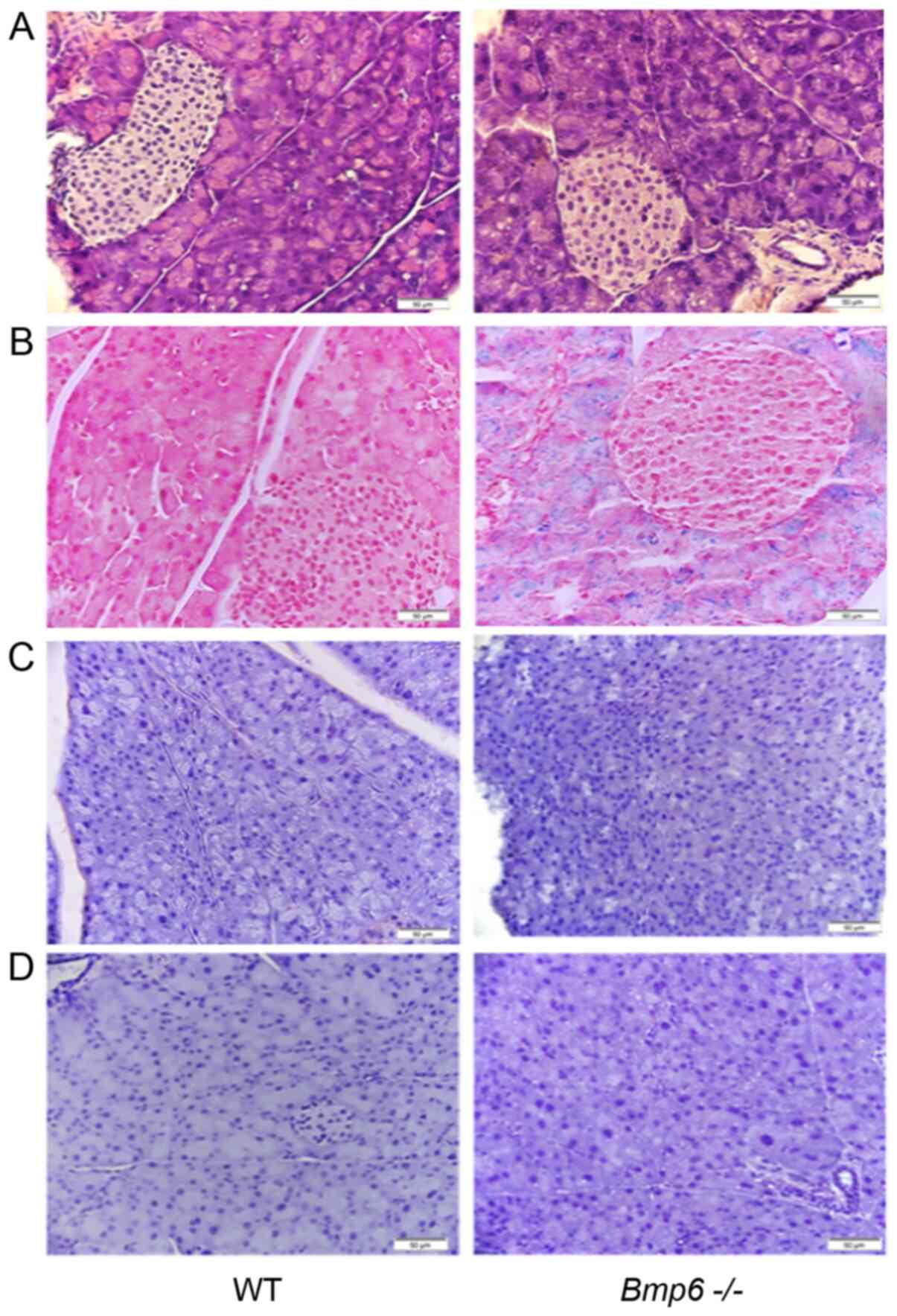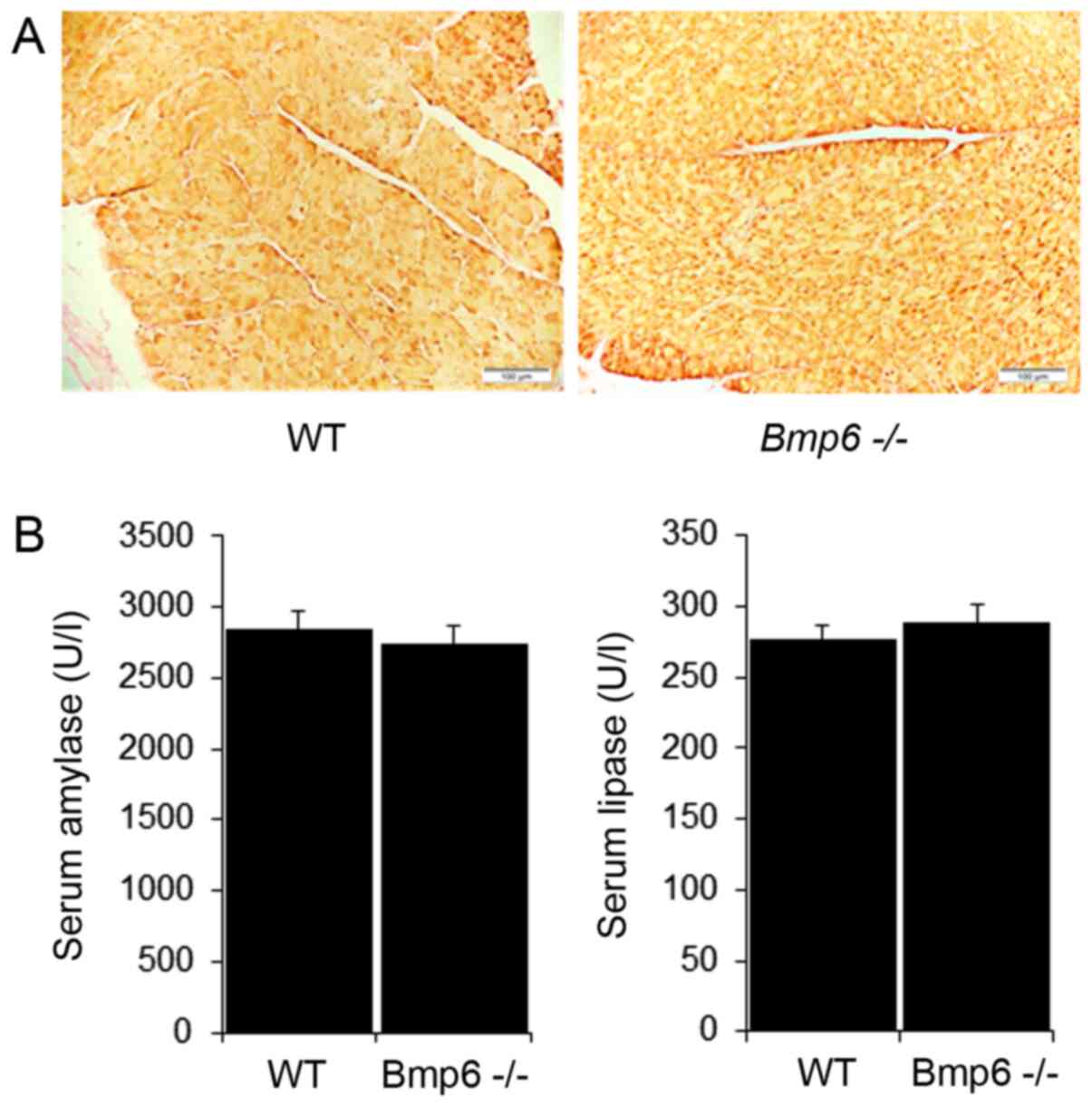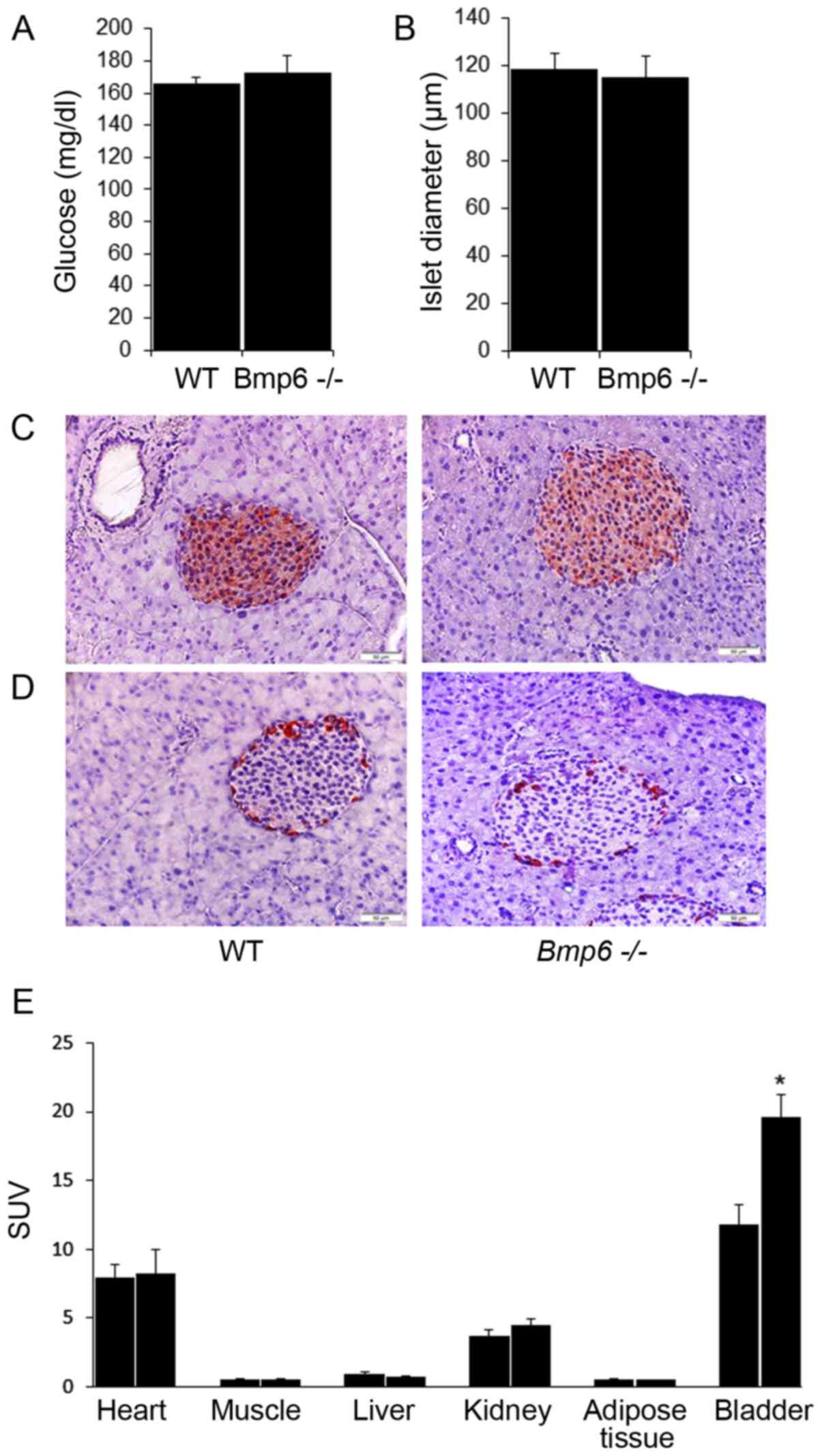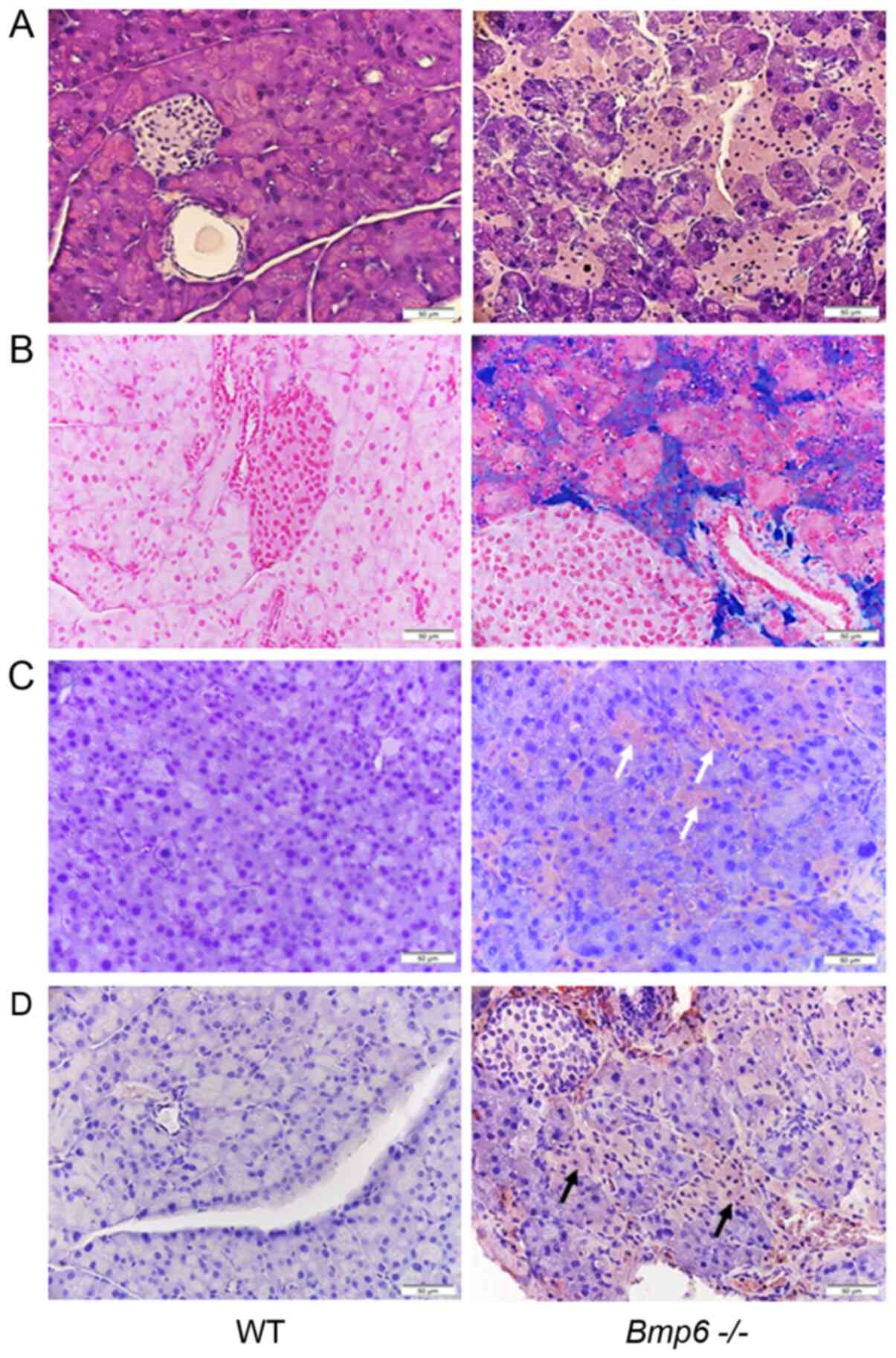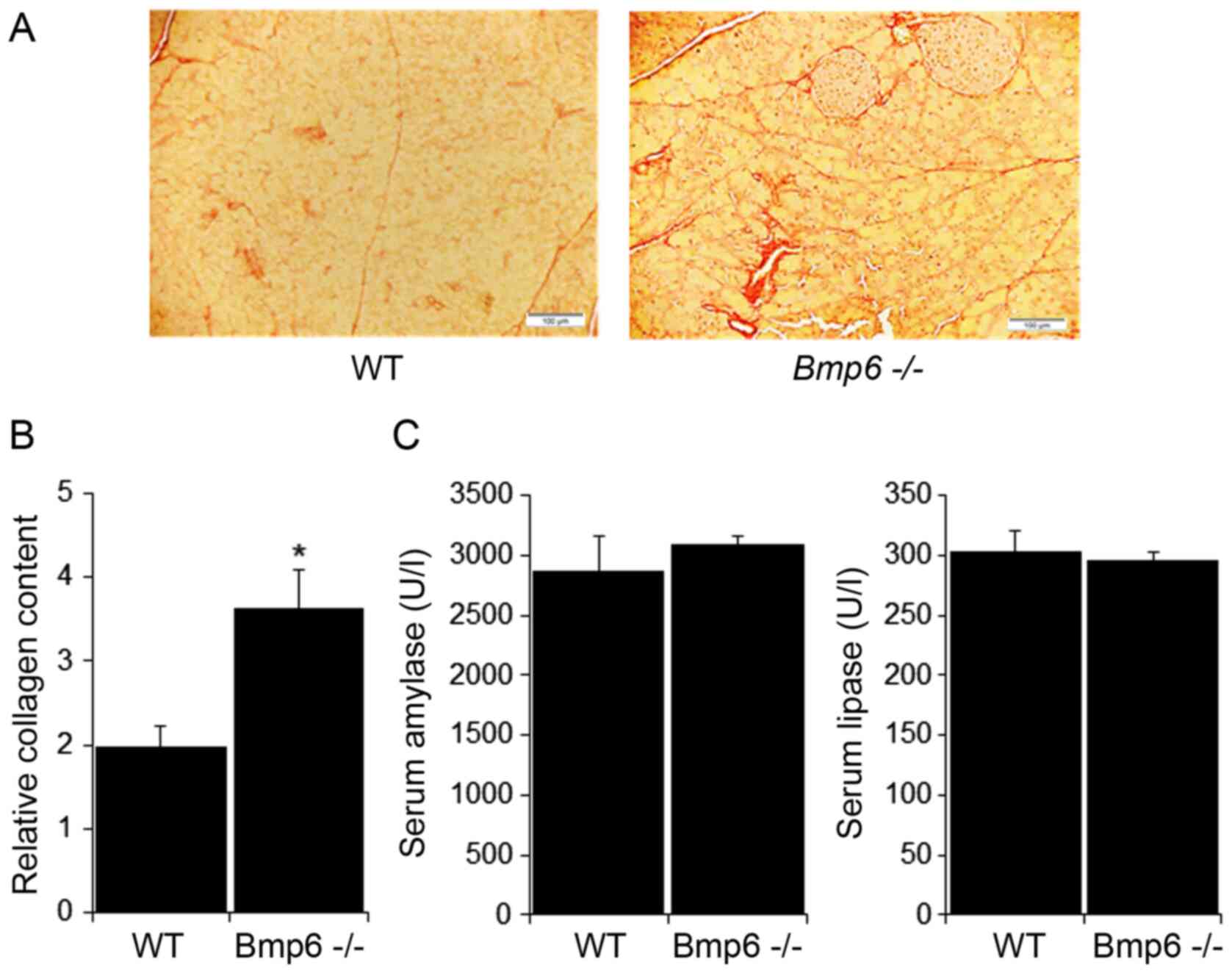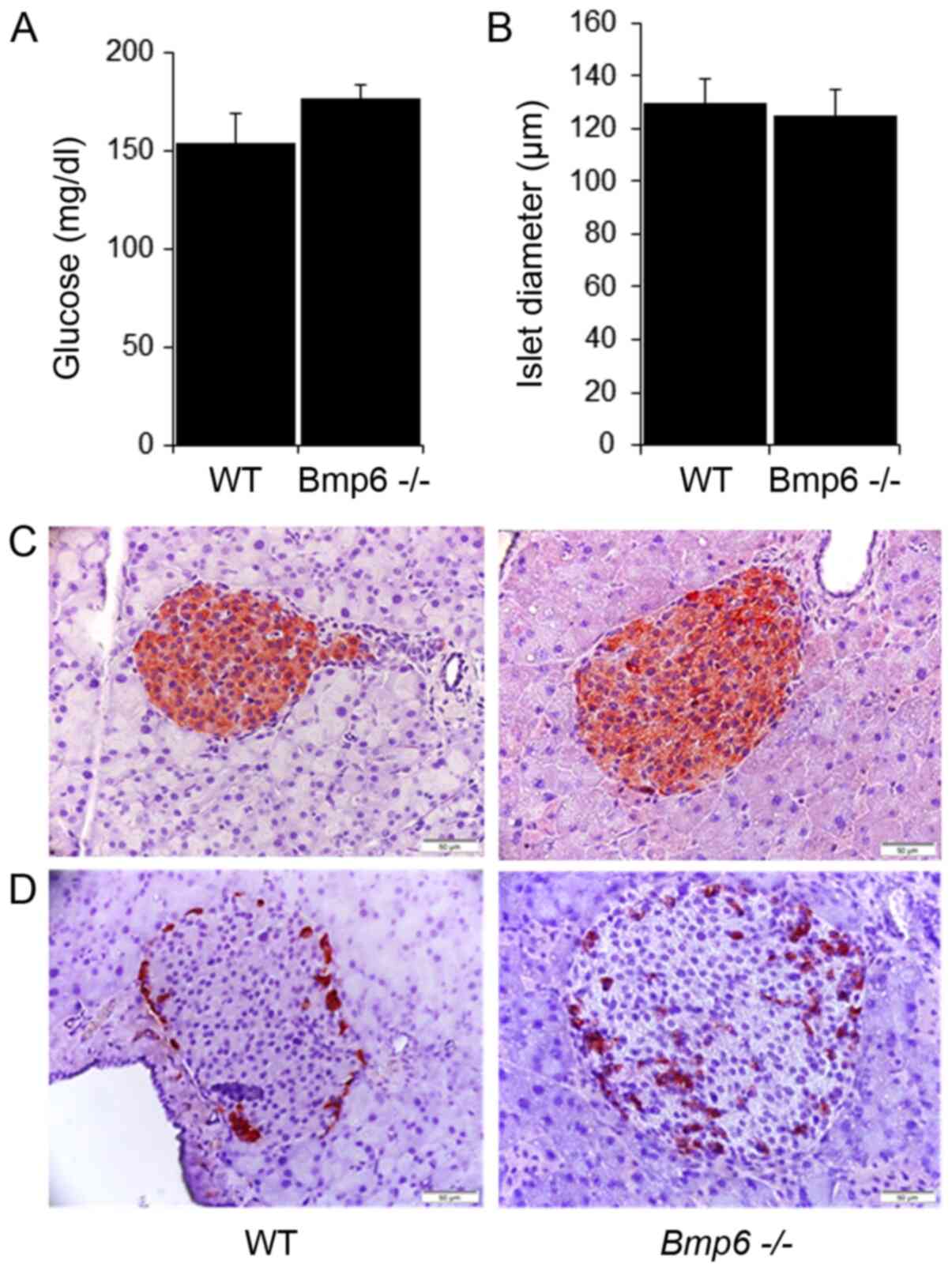|
1
|
Fleming RE and Ponka P: Iron overload in
human disease. N Engl J Med. 366:348–359. 2012. View Article : Google Scholar : PubMed/NCBI
|
|
2
|
Nemeth E, Tuttle MS, Powelson J, Vaughn
MB, Donovan A, Ward DM, Ganz T and Kaplan J: Hepcidin regulates
cellular iron efflux by binding to ferroportin and inducing its
internalization. Science. 306:2090–2093. 2004. View Article : Google Scholar : PubMed/NCBI
|
|
3
|
Pietrangelo A: Hereditary hemochromatosis:
Pathogenesis, diagnosis, and treatment. Gastroenterology.
139:393–408. 408.e1–e2. 2010. View Article : Google Scholar : PubMed/NCBI
|
|
4
|
Piubelli C, Castagna A, Marchi G, Rizzi M,
Busti F, Badar S, Marchetti M, De Gobbi M, Roetto A, Xumerle L, et
al: Identification of new BMP6 pro-peptide mutations in patients
with iron overload. Am J Hematol. 92:562–568. 2017. View Article : Google Scholar : PubMed/NCBI
|
|
5
|
Daher R, Kannengiesser C, Houamel D,
Lefebvre T, Bardou-Jacquet E, Ducrot N, de Kerguenec C, Jouanolle
AM, Robreau AM, Oudin C, et al: Heterozygous mutations in BmP6
pro-peptide lead to inappropriate hepcidin synthesis and moderate
iron overload in humans. Gastroenterology. 150:672–683,e4. 2016.
View Article : Google Scholar
|
|
6
|
Urist MR: Bone: Formation by
autoinduction. Science. 150:893–899. 1965. View Article : Google Scholar : PubMed/NCBI
|
|
7
|
Reddi AH: Role of morphogenetic proteins
in skeletal tissue engineering and regeneration. Nat Biotechnol.
16:247–252. 1998. View Article : Google Scholar : PubMed/NCBI
|
|
8
|
Wagner Do, Sieber C, Bhushan R, Börgermann
JH, Graf D and Knaus P: BMPs: From bone to body morphogenetic
proteins. Sci Signal. 3:mr12010.PubMed/NCBI
|
|
9
|
Sampath KT: The systems biology of bone
morphogenetic proteins. Bone Morphogenetic Proteins: Systems
Biology Regulators. Vukicevic S and Sampath KT: Springer
International Publishing; pp. 15–38. 2017
|
|
10
|
Andriopoulos B Jr, Corradini E, Xia Y,
Faasse SA, Chen S, Grgurevic L, Knutson MD, Pietrangelo A,
Vukicevic S, Lin Hy and Babitt JL: BMP6 is a key endogenous
regulator of hepcidin expression and iron metabolism. Nat Genet.
41:482–487. 2009. View
Article : Google Scholar : PubMed/NCBI
|
|
11
|
Meynard D, Kautz L, Darnaud V,
Canonne-Hergaux F, Coppin H and Roth MP: Lack of the bone
morphogenetic protein BMP6 induces massive iron overload. Nat
Genet. 41:478–481. 2009. View
Article : Google Scholar : PubMed/NCBI
|
|
12
|
Corradini E, Schmidt PJ, Meynard D, Garuti
C, Montosi G, Chen S, Vukicevic S, Pietrangelo A, Lin HY and Babitt
JL: BMP6 treatment compensates for the molecular defect and
ameliorates hemochromatosis in Hfe knockout mice. Gastroenterology.
139:1721–1729. 2010. View Article : Google Scholar : PubMed/NCBI
|
|
13
|
Yu PB, Hong CC, Sachidanandan C, Babitt
JL, Deng DY, Hoyng SA, Lin HY, Bloch KD and Peterson RT:
Dorsomorphin inhibits BMP signals required for embryogenesis and
iron metabolism. Nat Chem Biol. 4:33–41. 2008. View Article : Google Scholar
|
|
14
|
McClain DA, Abraham D, Rogers J, Brady R,
Gault P, Ajioka R and Kushner JP: High prevalence of abnormal
glucose homeostasis secondary to decreased insulin secretion in
individuals with hereditary haemochromatosis. Diabetologia.
49:1661–1669. 2006. View Article : Google Scholar : PubMed/NCBI
|
|
15
|
Mendler MH, Turlin B, Moirand R, Jouanolle
AM, Sapey T, Guyader D, Le Gall JY, Brissot P, David V and Deugnier
Y: Insulin resistance-associated hepatic iron overload.
Gastroenterology. 117:1155–1163. 1999. View Article : Google Scholar : PubMed/NCBI
|
|
16
|
Hramiak IM, Finegood DT and Adams PC:
Factors affecting glucose tolerance in hereditary hemochromatosis.
Clin Invest Med. 20:110–118. 1997.PubMed/NCBI
|
|
17
|
Ramey G, Faye A, Durel B, Viollet B and
Vaulont S: Iron overload in Hepc1(-/-) mice is not impairing
glucose homeostasis. FEBS Lett. 581:1053–1057. 2007. View Article : Google Scholar : PubMed/NCBI
|
|
18
|
Latour C, Besson-Fournier C, Meynard D,
Silvestri L, Gourbeyre O, Aguilar-Martinez P, Schmidt PJ, Fleming
MD, Roth MP and Coppin H: Differing impact of the deletion of
hemochromatosis-associated molecules HFE and transferrin receptor-2
on the iron phenotype of mice lacking bone morphogenetic protein 6
or hemojuvelin. Hepatology. 63:126–137. 2016. View Article : Google Scholar
|
|
19
|
Latour C, Besson-Fournier C, Gourbeyre O,
Meynard D, Roth MP and Coppin H: Deletion of BMP6 worsens the
phenotype of HJV-deficient mice and attenuates hepcidin levels
reached after LPS challenge. Blood. 130:2339–2343. 2017. View Article : Google Scholar : PubMed/NCBI
|
|
20
|
Pauk M, Grgurevic L, Brkljacic J, Kufner
V, Bordukalo-Niksic T, Grabusic K, Razdorov G, Rogic D, Zuvic M,
Oppermann H, et al: Exogenous BMP7 corrects plasma iron overload
and bone loss in Bmp6-/- mice. Int Orthop. 39:161–172. 2015.
View Article : Google Scholar
|
|
21
|
Meynard D, Vaja V, Sun CC, Corradini E,
Chen S, López-Otín C, Grgurevic L, Hong CC, Stirnberg M, Gütschow
M, et al: Regulation of TMPRSS6 by BMP6 and iron in human cells and
mice. Blood. 118:747–756. 2011. View Article : Google Scholar : PubMed/NCBI
|
|
22
|
Altamura S, Kessler R, Gröne HJ, Gretz N,
Hentze MW, Galy B and Muckenthaler MU: Resistance of ferroportin to
hepcidin binding causes exocrine pancreatic failure and fatal iron
overload. Cell Metab. 20:359–367. 2014. View Article : Google Scholar : PubMed/NCBI
|
|
23
|
Lunova M, Schwarz P, Nuraldeen R, Levada
K, Kuscuoglu D, Stützle M, Vujić Spasić M, Haybaeck J, Ruchala P,
Jirsa M, et al: Hepcidin knockout mice spontaneously develop
chronic pancreatitis owing to cytoplasmic iron overload in acinar
cells. J Pathol. 241:104–114. 2017. View Article : Google Scholar
|
|
24
|
Cooksey RC, Jouihan HA, Ajioka Rs, Hazel
MW, Jones DL, Kushner JP and McClain DA: Oxidative stress,
beta-cell apoptosis, and decreased insulin secretory capacity in
mouse models of hemochromatosis. Endocrinology. 145:5305–5312.
2004. View Article : Google Scholar : PubMed/NCBI
|
|
25
|
Council of Europe: European Convention for
the Protection of Vertebrate Animals used for Experimental and
other Scientific Purposes. ETS 123; Strasbourg: 1986
|
|
26
|
Solloway MJ, Dudley AT, Bikoff EK, Lyons
KM, Hogan BL and Robertson EJ: Mice lacking Bmp6 function. Dev
Genet. 22:321–339. 1998. View Article : Google Scholar : PubMed/NCBI
|
|
27
|
Bhatia M, Saluja AK, Hofbauer B, Frossard
JL, Lee HS, Castagliuolo I, Wang CC, Gerard N, Pothoulakis C and
Steer ML: Role of substance P and the neurokinin 1 receptor in
acute pancreatitis and pancreatitis-associated lung injury. Proc
Natl Acad Sci uSA. 95:4760–4765. 1998. View Article : Google Scholar : PubMed/NCBI
|
|
28
|
Rangan GK and Tesch GH: Quantification of
renal pathology by image analysis. Nephrology (Carlton).
12:553–558. 2007. View Article : Google Scholar
|
|
29
|
Roldan PS, Chereul E, Dietzel O, Magnier
L, Pautrot C, Rbah-Vidal L, Sappey-Marinier D, Wagner A, Zimmer L,
Janier MF, et al: Raytest ClearPET (TM), a new generation small
animal PET scanner. Nucl Instrum Methods Phys Res A Accel Spectrom
Detect Assoc Equip. 571:498–501. 2007. View Article : Google Scholar
|
|
30
|
Hansen JB, Moen IW and Mandrup-Poulsen T:
Iron: The hard player in diabetes pathophysiology. Acta Physiol
(Oxf). 210:717–732. 2014. View Article : Google Scholar
|
|
31
|
Buysschaert M, Paris I, Selvais P and
Hermans MP: Clinical aspects of diabetes secondary to idiopathic
haemochromatosis in French-speaking Belgium. Diabetes Metab.
23:308–313. 1997.PubMed/NCBI
|
|
32
|
Hatunic M, Finucane FM, Brennan AM, Norris
S, Pacini G and Nolan JJ: Effect of iron overload on glucose
metabolism in patients with hereditary hemochromatosis. Metabolism.
59:380–384. 2010. View Article : Google Scholar
|
|
33
|
Dichmann DS, Miller CP, Jensen J, Scott
Heller R and Serup P: Expression and misexpression of members of
the FGF and TGFbeta families of growth factors in the developing
mouse pancreas. Dev Dyn. 226:663–674. 2003. View Article : Google Scholar : PubMed/NCBI
|
|
34
|
Pratt DS and Kaplan MM: Evaluation of
abnormal liver-enzyme results in asymptomatic patients. N Engl J
Med. 342:1266–1271. 2000. View Article : Google Scholar : PubMed/NCBI
|
|
35
|
Ramos E, Kautz L, Rodriguez R, Hansen M,
Gabayan V, Ginzburg Y, Roth MP, Nemeth E and Ganz T: Evidence for
distinct pathways of hepcidin regulation by acute and chronic iron
loading in mice. Hepatology. 53:1333–1341. 2011. View Article : Google Scholar : PubMed/NCBI
|
|
36
|
Canali S, Wang CY, Zumbrennen-Bullough KB,
Bayer A and Babitt JL: Bone morphogenetic protein 2 controls iron
homeostasis in mice independent of Bmp6. Am J Hematol.
92:1204–1213. 2017. View Article : Google Scholar : PubMed/NCBI
|
|
37
|
Xiao X, Dev S, Canali S, Bayer A, Xu Y,
Agarwal A, Wang CY and Babitt JL: Endothelial bone morphogenetic
protein 2 (Bmp2) knockout exacerbates hemochromatosis in
homeostatic iron regulator (Hfe) knockout mice but not bmp6
knockout mice. Hepatology. 72:642–655. 2020. View Article : Google Scholar
|
|
38
|
Huang FW, Pinkus JL, Pinkus GS, Fleming MD
and Andrews NC: A mouse model of juvenile hemochromatosis. J Clin
Invest. 115:2187–2191. 2005. View Article : Google Scholar : PubMed/NCBI
|
|
39
|
Wagner J, Fillebeen C, Haliotis T,
Charlebois E, Katsarou A, MUI J, Vali H and Pantopoulos K: mouse
models of hereditary hemochromatosis do not develop early liver
fibrosis in response to a high fat diet. PLoS one. 14:e02214552019.
View Article : Google Scholar : PubMed/NCBI
|
|
40
|
Padda RS, Gkouvatsos K, Guido M, Mui J,
Vali H and Pantopoulos K: A high-fat diet modulates iron metabolism
but does not promote liver fibrosis in hemochromatotic
Hjv−/− mice. Am J Physiol Gastrointest Liver Physiol.
308:G251–G261. 2015. View Article : Google Scholar
|
|
41
|
Mareninova OA, Sung KF, Hong P, Lugea A,
Pandol SJ, Gukovsky I and Gukovskaya AS: Cell death in
pancreatitis: Caspases protect from necrotizing pancreatitis. J
Biol Chem. 281:3370–3381. 2006. View Article : Google Scholar
|
|
42
|
Pauk M, Bordukalo-Niksic T, Brkljacic J,
Paralkar VM, Brault AL, Dumic-Cule I, Borovecki F, Grgurevic L and
Vukicevic S: A novel role of bone morphogenetic protein 6 (BMP6) in
glucose homeostasis. Acta Diabetol. 56:365–371. 2019. View Article : Google Scholar :
|
|
43
|
Guo Q, Wang W, Abboud R and Guo Z:
Impairment of maturation of BMP-6 (35 kDa) correlates with delayed
fracture healing in experimental diabetes. J Orthop Surg Res.
15:1862020. View Article : Google Scholar : PubMed/NCBI
|
|
44
|
Westerweel PE, van Velthoven CT, Nguyen
TQ, den Ouden K, de Kleijn DP, Goumans MJ, Goldschmeding R and
Verhaar MC: Modulation of TGF-β/BMP-6 expression and increased
levels of circulating smooth muscle progenitor cells in a type I
diabetes mouse model. Cardiovasc Diabetol. 9:552010. View Article : Google Scholar
|
|
45
|
Nguyen TQ, Chon H, van Nieuwenhoven FA,
Braam B, Verhaar MC and Goldschmeding R: myofibroblast progenitor
cells are increased in number in patients with type 1 diabetes and
express less bone morphogenetic protein 6: A novel clue to adverse
tissue remodelling? Diabetologia. 49:1039–1048. 2006. View Article : Google Scholar : PubMed/NCBI
|
|
46
|
Vinci MC, Gambini E, Bassetti B, Genovese
S and Pompilio G: When good guys turn bad: Bone marrow's and
hematopoietic stem cells' role in the pathobiology of diabetic
complications. Int J mol Sci. 21:38642020. View Article : Google Scholar
|
|
47
|
Jenkitkasemwong S, Wang CY, Coffey R,
Zhang W, Chan A, Biel T, Kim JS, Hojyo S, Fukada T and Knutson MD:
SLC39A14 is required for the development of hepatocellular iron
overload in murine models of hereditary hemochromatosis. Cell
Metab. 22:138–150. 2015. View Article : Google Scholar : PubMed/NCBI
|
|
48
|
Kautz L, Meynard D, Monnier A, Darnaud V,
Bouvet R, Wang RH, Deng C, Vaulont S, Mosser J, Coppin H and Roth
MP: Iron regulates phosphorylation of Smad1/5/8 and gene expression
of Bmp6, Smad7, Id1, and Atoh8 in the mouse liver. Blood.
112:1503–1509. 2008. View Article : Google Scholar : PubMed/NCBI
|
|
49
|
Vujić Spasić M, Sparla R, Mleczko-Sanecka
K, Migas MC, Breitkopf-Heinlein K, Dooley S, Vaulont S, Fleming RE
and Muckenthaler MU: Smad6 and Smad7 are co-regulated with hepcidin
in mouse models of iron overload. Biochim Biophys Acta. 1832:76–84.
2013. View Article : Google Scholar
|















